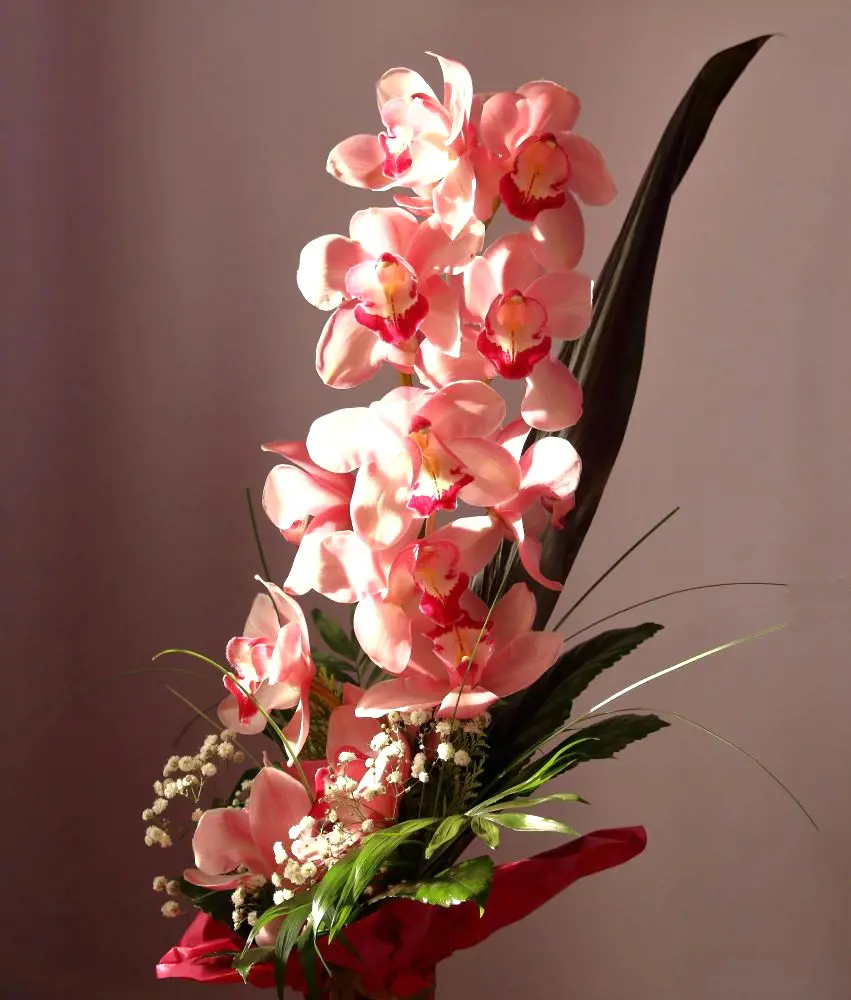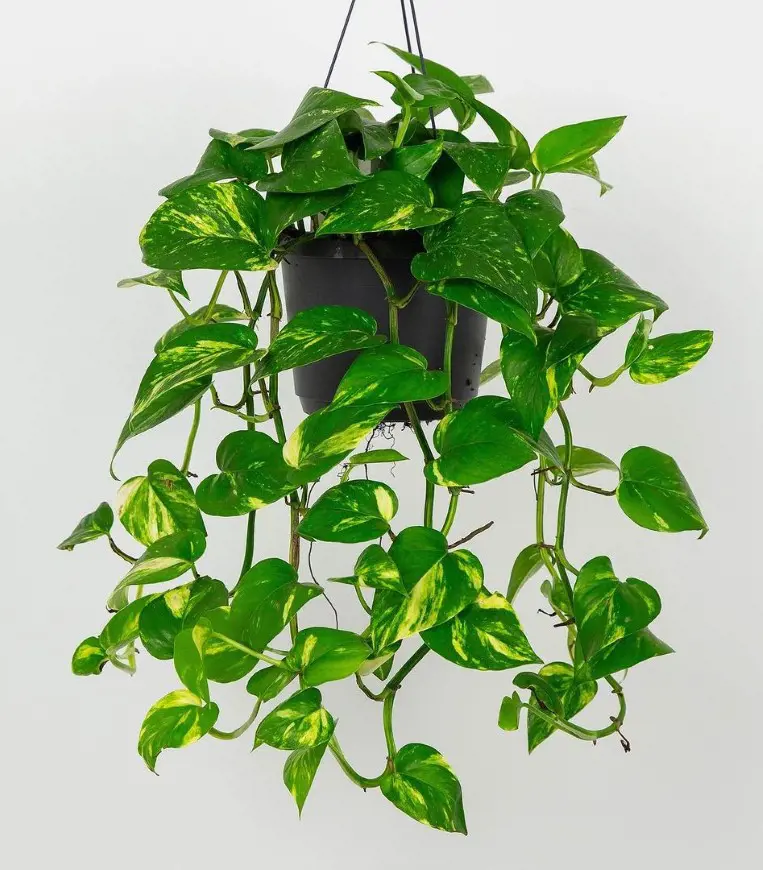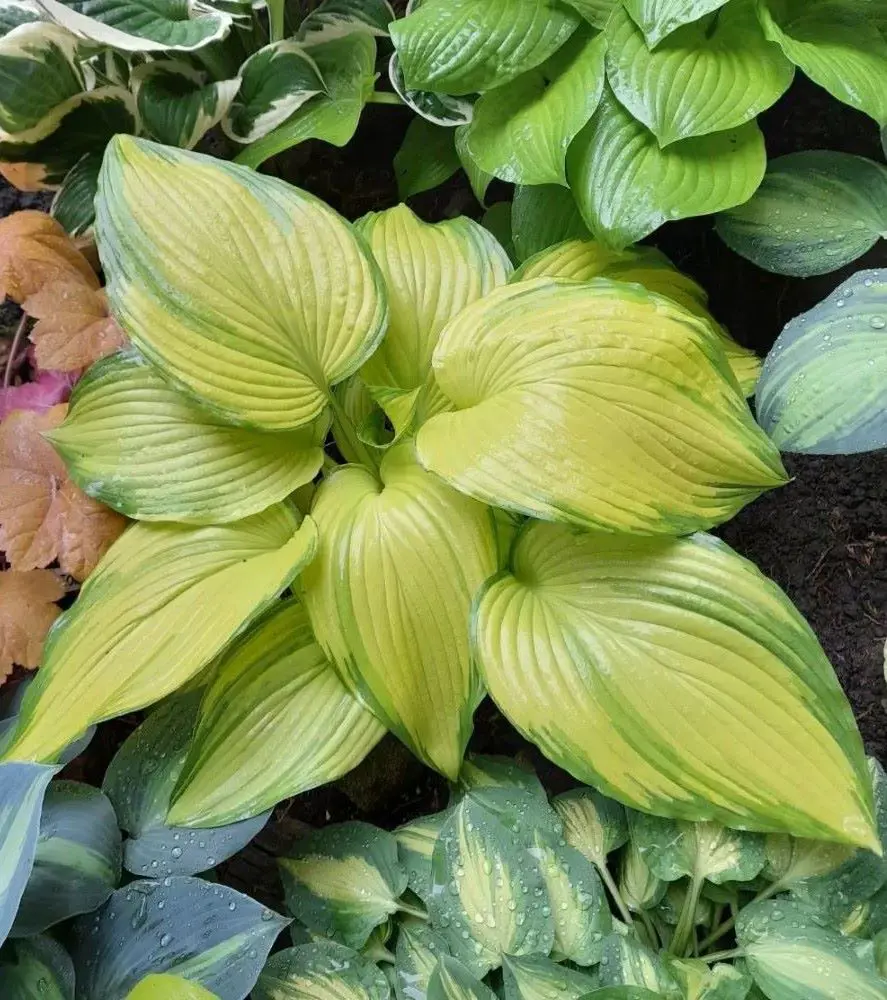Reasons Why Hibiscus Leaves Are Turning Yellow

This post may contain affiliate links. If you make a purchase through links on our site, we may earn a commission.
Hibiscus leaves turning yellow could indicate several potential issues. Overwatering, underwatering, poor soil drainage, and nutrient deficiencies are some of the main culprits resulting in hibiscus leaves turning yellow.
So, here is what you should know about the yellow leaves of the hibiscus plant.
Hibiscus Plant Overview
| Scientific Name | Hibiscus spp. |
| Common Name | Hibiscus |
| Type | Annual and perennial herbaceous plants |
| Size | 3-10 ft. tall and 2-8 ft. wide |
| Sunlight Requirement | Full sun, partial shade |
| Soil Type/pH | Moist, well-drained/Acidic, Neutral |
| Hardiness Zone | 5-11 (USDA) |
| Native Area | Asia, North America |
Understanding The Causes

Yellow leaves on hibiscus plants usually mean the plant is stressed, signaling that it's facing some sort of problem with its environment or care. Stress factors may include problems with watering, changes in temperature, not enough light, lacking nutrients, pests, or other environmental conditions.
While some yellowing of hibiscus leaves is natural as part of their growth cycle, widespread or persistent yellowing often indicates underlying issues such as:
Watering Issues
Hibiscus plants may have yellow leaves as a result of both underwatering and overwatering. Overwatering leads to waterlogged soil and root rot. When roots suffocate due to excessive moisture, they cannot absorb nutrients properly, resulting in yellowing leaves. Symptoms typically start at the bottom of the plant and progress upward.
Conversely, underwatering can also cause yellowing leaves as the plant becomes stressed from a lack of water. This stress disrupts normal physiological processes, including nutrient uptake, leading to leaf discoloration.
Lighting Problems
Lighting problems can cause yellow leaves in hibiscus plants, primarily due to inadequate or excessive light exposure. Without enough light, hibiscus plants cannot produce adequate amounts of chlorophyll, the green pigment responsible for capturing sunlight and converting it into energy. As a result, leaves may appear pale or yellowish as chlorophyll levels decrease.
Conversely, exposure to excessive sunlight or intense, direct light can also cause yellowing leaves in hibiscus plants. When subjected to high levels of light, hibiscus leaves may experience photoinhibition, a process where excess light damages the photosynthetic apparatus and disrupts normal metabolic functions. This can lead to leaf scorching, characterized by yellow or brown patches on the leaves, and overall stress on the plant.
Nutritional Deficiencies
Nutritional deficiencies can cause yellow leaves by disrupting the plant's essential metabolic processes and impairing its ability to produce chlorophyll. When hibiscus plants lack key nutrients such as nitrogen, iron, or magnesium, chlorophyll production is compromised, leading to a gradual loss of green coloration in the leaves.
As chlorophyll levels decline, leaves may turn yellow, pale, or exhibit interveinal chlorosis. The veins remain green while the areas between them turn yellow. Additionally, nutrient deficiencies can weaken the overall health of the plant, making it more susceptible to environmental stressors and pest infestations.
Other Potential Causes
Besides problems with watering, light, and nutrients, there are other reasons why these perennial flower leaves might turn yellow. It's important to know about these additional causes to take good care of your hibiscus plants. Here are some more possible reasons for yellow leaves on hibiscus:
- Temperature Stress: Extremely hot or cold temperatures can stress hibiscus plants, causing their leaves to turn yellow.
- Pest Infestations: Invaders like spider mites can attack hibiscus plants, leading to yellow leaves.
- Location and Environment: If the soil doesn't drain well or if the plant's roots are crowded, it can cause hibiscus leaves to yellow.
- Nutrient Competition: When hibiscus plants are too close together, they might compete for nutrients, which can result in yellowing leaves due to nutrient deficiency.
- Dormancy: During seasonal changes, like winter dormancy, hibiscus leaves may turn yellow as the plant gets ready for a rest period.
- Wind and Draft: Exposure to strong winds can cause physical damage to the leaves, leading to tearing, shredding, or drying out. Additionally, constant buffeting from strong winds can stress the plant and disrupt its ability to absorb water and nutrients, which may result in yellowing leaves.
- Frost: When temperatures drop below freezing, ice crystals can form within plant cells, leading to cell damage and rupture. As a result, affected leaves may turn yellow, wilt, or become necrotic (turn brown or black).
Identifying The Actual Cause

Once you've identified potential causes of yellowing leaves on your hibiscus plants, the next step is to carefully observe the plants for signs of these issues. Yellow leaves in hibiscus plants are typically identified by discoloration that often starts at the tips or edges and spreads inward.
The leaves may feel softer or more fragile compared to healthy green leaves. Depending on the cause, yellowing may occur uniformly across the plant or in specific patterns, such as along veins or at leaf margins. In severe cases, yellow leaves may eventually drop from the plant.
Follow these steps to diagnose the cause of yellowing leaves in hibiscus plants:
- Look at the plant: Take a good look at the overall health of the plant, including the size and shape of the leaves, and check for any bugs or diseases.
- Check the soil: Examine the soil to see if it drains well and has the right balance of nutrients. Look for any signs of too much or too little of certain nutrients.
- Review watering habits: Consider if you're giving the plant too much or too little water, as both can cause leaves to turn yellow.
- Consider light levels: Think about how much sunlight the plant gets each day, as too little or too much light can lead to yellowing leaves.
- Watch for pests and diseases: Keep an eye out for any signs of pests like spider mites or diseases like powdery mildew, as they can also cause leaves to turn yellow.
- Take note of temperature and humidity: Pay attention to the temperature and humidity where the plant is located, as extreme conditions can stress the plant and cause yellowing.
- Monitor nutrient levels: Test the soil to see if it has enough of the right nutrients, especially nitrogen, iron, and magnesium, which are crucial for healthy growth.
By making any necessary adjustments, you can figure out why your hibiscus leaves are turning yellow and take steps to fix the problem.
Treatment Options

Yellow leaves on hibiscus plants are often treatable, especially if the underlying cause is identified and addressed promptly. In many cases, once the issue is resolved, new growth will emerge with healthy green leaves.
However, in more serious cases where the underlying issue is not addressed or if the plant is severely stressed, it may struggle to recover fully. Here are solutions for the causes mentioned above:
Adjust Watering Practices
To treat yellow leaves in hibiscus plants caused by watering issues, ensure proper watering by allowing the soil to partially dry out between waterings. Stick your finger into the soil; if it feels dry about an inch below the surface, it's time to water.
Also, improve soil drainage by repotting the plant in well-draining soil or adding organic matter such as perlite or compost. Use containers with drainage holes to prevent water from accumulating around the roots. Water the plant at the base, avoiding wetting the foliage, which can promote fungal diseases.
Relocate the Plant to a Better Location
To address lighting issues causing yellow leaves in hibiscus plants, it's essential to provide the appropriate amount and quality of light for optimal growth. If hibiscus plants do not receive enough sunlight, they may develop yellow leaves due to insufficient photosynthesis and nutrient production.
Relocate it to a brighter area to receive sufficient sunlight, ideally for at least 6 hours a day. Conversely, if the hibiscus receives too much direct sunlight, consider moving it to a location with filtered or indirect sunlight. Providing shade during the hottest part of the day or using sheer curtains to filter intense sunlight can also help.
Apply Rich Balanced Fertilizer
Address nutrient deficiencies by applying a balanced fertilizer rich in nitrogen, iron, and magnesium to promote healthy leaf color. Regularly feed the plant during the growing season, and consider amending the soil with nutrients as needed.
Also, fertilize the hibiscus with a balanced fertilizer specifically formulated for flowering plants. Look for products with a higher potassium (K) content, which promotes flower production.
Other Potential Measures
There are additional measures you can take to treat hibiscus yellow leaves beyond adjusting watering, relocating the plant, and providing proper nutrition. Some of them are:
- Pruning: Trim off yellowed or damaged leaves and branches to encourage new growth and improve the overall appearance of the plant.
- Soil amendments: If soil pH is off balance, amend it with materials such as sulfur to lower pH (for acidic soil) or lime to raise pH (for alkaline soil).
- Mulching: Apply a layer of organic mulch around the base of the plant to help retain soil moisture, regulate soil temperature, and suppress weed growth.
- Supportive care: Provide additional support to the plant during periods of stress or recovery.
- Foliar Feeding: In addition to soil fertilization, consider foliar feeding by spraying a water-soluble fertilizer directly onto the leaves.
- Biostimulants: Use biostimulants such as seaweed extracts or compost tea to promote root growth, enhance nutrient absorption, and improve overall plant resilience. You might also want to learn how to make compost at home easily.
- Pest management: Implement integrated pest management strategies to control pest infestations effectively.
- Protection from Frost: Cover hibiscus plants with frost cloth, blankets, or cardboard boxes before nightfall to protect them from frost damage.
- Wind Protection: Shield hibiscus plants from strong winds by installing windbreaks or barriers, such as fences, trellises, or shrubs.
General Care Tips

Hibiscus plants typically grow as shrubs or small trees, depending on the species and variety. In their natural habitat, these plants thrive in warm, tropical, or subtropical climates with ample sunlight and well-drained soil.
The hibiscus plant care involves ample sunlight, regular watering, well-draining soil, occasional fertilization, pruning for shape and health, and protection from extreme weather.
Light
Hibiscus plants prefer full sun, meaning they thrive in locations with at least 6–8 hours of direct sunlight per day. Insufficient sunlight can result in reduced blooming and leggy growth.
Indoor tropical hibiscus should be placed near a sunny window, but avoid strong, direct sunlight. When moving plants outdoors in warmer weather, gradually acclimate them to the brighter conditions.
Water
While hibiscus plants prefer consistently moist soil, they are susceptible to root rot if overwatered. Water deeply but infrequently, allowing the top inch or so of soil to dry out between waterings.
Water deeply when the top inch of soil is dry, usually 1-2 times per week, adjusting based on the surroundings.
Soil
They thrive in well-draining soil that is rich in organic matter. It's essential to ensure the soil is consistently moist but not waterlogged, as hibiscus plants are susceptible to root rot. Additionally, maintaining a slightly acidic to neutral pH level (around 6.0 to 7.0) in the soil promotes optimal nutrient uptake.
Pruning
Prune hibiscus plants regularly to remove dead or diseased branches, encourage bushy growth, and shape the plant. Pruning also helps promote flowering by removing old wood and stimulating new growth.
Early spring pruning promotes a well-groomed appearance and encourages robust growth throughout the growing season.
Fertilization
Regular fertilization during the growing season (spring through fall) is important for promoting healthy growth and flowering. Use a balanced fertilizer formulated for flowering plants and follow the recommended dosage on the product label.
When late fall and winter arrive, and your plant is in a resting phase, cut back or stop fertilizing. When applying fertilizer, distribute it evenly around the plant's base, making sure not to let it touch the stem directly.
Protection From Extreme Conditions
While hibiscus plants can tolerate some degree of heat, cold, and drought once established, they may suffer damage or stress during extreme weather conditions. Protect from frost in cooler climates and provide adequate watering during periods of drought.
When To Seek Help

If hibiscus yellow leaves persist despite your efforts, seeking professional help from plant experts is a wise decision. Plant experts, such as certified arborists, horticulturists, or plant pathologists, can offer specialized knowledge and diagnostic skills to identify any underlying issues that may be causing the persistent yellowing.
Seeking expert help for hibiscus yellow leaves may be necessary in the following extreme conditions:
- Severe and widespread yellowing
- Persistent yellowing despite treatment
- Unusual symptoms or patterns
- Rapid decline in plant health
- Recurring or chronic problems
These professionals can conduct thorough assessments of the hibiscus plants, taking into account factors such as environmental conditions, soil quality, pest infestations, and disease pathogens. This precise diagnosis enables targeted treatment strategies tailored to the unique needs of the plant.
Additionally, plant experts can provide recommendations for implementing effective care practices to improve the overall health of the hibiscus plant.
Conclusion
Understanding why hibiscus leaves turn yellow is important for keeping them healthy and strong. When leaves turn yellow, it's like a signal that something's not right. It could mean they need more nutrients, they're being bugged by pests, they're not getting enough water, or they're stressed from things like temperature changes or not enough sunlight.
By looking for signs like yellow spots, changing color, or leaves falling off, gardeners can figure out what's causing the problem and fix it. They can do things like water the plants better, make sure they get enough light, or give them the nutrients they need
Sometimes, if the yellowing keeps happening or if it's really bad, it might be a good idea to get help from plant experts who know a lot about hibiscus plants. They can help with tricky problems like persistent yellowing, bad bug infestations, or if there's something wrong with the environment that's hard to figure out.
Recent posts
Plant Care
Plant Care
How To Take Care Of An Orchid Plant? 11 Tips And Tricks
If you love gorgeous orchids but are worried they're too high-maintenance, don't worry. This guide is like a cheat sheet for orchid newbies. Forget fancy words and confusing schedules — we're talking about how to take care of an orchid pla...
Plant Care
How To Grow and Care For Peace Lily Plant
The Peace Lily is an indoor plant that is most valued for its beautiful and shiny green leaves as well as the white blooms. Hard and tolerant, it’s naturally a low-maintenance addition to your plant collection. If you are confused, let us tell ...
Plant Care
Pothos Plant Care And Growing Guide
Adding a Pothos plant (Devil’s Ivy) to your home benefits the environment and aesthetic of your personal space. It's easy to maintain and is loved for it's ability to enhance indoor air quality by removing toxins like formaldehyde, benzene, and...
Plant Care
Snake Plant Care and Growing Guide
Snake plants require low maintenance, and low light and are almost impossible to kill, making them a perfect plant for beginners and seasoned gardeners. In this guide, we will explore essential care tips and optimal growing conditions for snake plant...
Plant Care
How To Plant, Grow and Care Majesty Palm
The majestic palm, scientifically known as Ravenea rivularis, makes for a stunning indoor tree with its lush and grand fronds. Originating from Madagascar's river banks, this resilient houseplant is cherished not only for its beauty but also for its ...
Plant Care
How To Grow And Care For A Hosta Plant
Hosta plants are widespread perennials, often grown for their beautiful and diverse foliage. They are extremely easy to care for and can thrive in various conditions, particularly shade or semi-shade. These hardy plants can last for many years and re...







